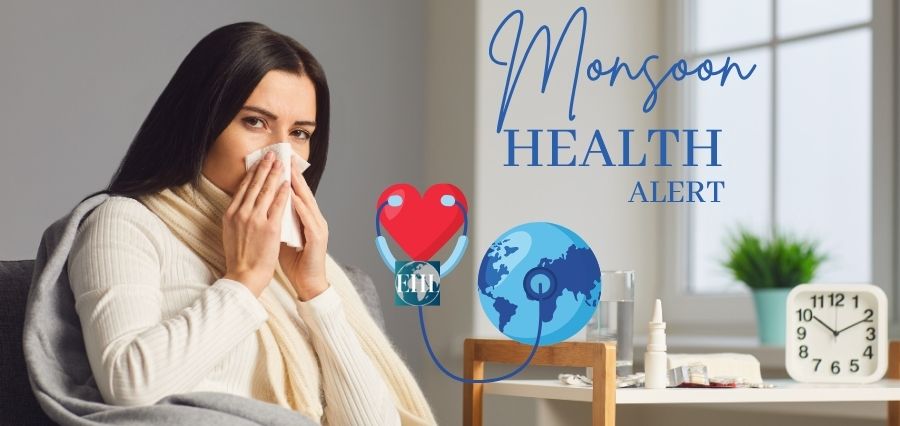Prime Highlights
- Monsoon health alert increases the risk of waterborne, vector-borne, airborne, and skin infections.
- Preventive hygiene, safe drinking water, and mosquito control are the secrets to staying healthy.
Key Facts
- Typhoid, cholera, and hepatitis are caused by contaminated water.
- Mosquito-borne dengue and malaria thrive in standing water.
- Fungal skin infections and respiratory issues worsen with high humidity.
Key Background
The onset of the monsoon health alert is a relief to the sweltering summer, but that too comes with enhanced health risks. The shift from heavy downpours to pools of water, from increased humidity to fairly lower vigilance of hygiene practices upon one’s body opens up the threat of the quick spread of infection.
Diseases carried by water are common during monsoons. Typhoid, cholera, diarrhoea, and hepatitis A and E are more common because of water and food poisoning. Rainwater gets contaminated with sewage and pollutes drinking water. Intake of street food, especially food served in ice or raw material, also raises the risk factor. One must drink boiled or filtered water and home-cooked food prepared from fresh vegetables to avoid these diseases.
Vector-borne diseases such as dengue, chikungunya, malaria, and Japanese encephalitis are on the rise during this season. Mosquitoes breed in stagnant water collected in open utensils, potted plants, and unstopped drains. Stay away from these diseases by using mosquito repellents, full sleeves, netted sleeping, and eliminating any stagnant water nearby.
Airborne illnesses like the flu, common cold, and respiratory infections also increase since the added moisture in the air makes them more prevalent. Asthma episodes and allergic reactions worsen as additional moisture provides an opportunity for mold and fungus spores to propagate during humid conditions. Ventilation indoors, disinfectants, and removal of abrupt temperature changes can reduce risks.
Skin infections such as ringworm and athlete’s foot are also common. Fungal growth can be caused by dampness for an extended time, splashing in water puddles, and not drying skin properly. Prevention of the infections is brought about by bathing daily, drying feet and skin folds well, and quickly removing wet clothes.
Leptospirosis due to bacterial infection from contact with water that has been contaminated by animal urine is another threat in the event of floods. Wearing waterproof footwear and keeping away from any contact with the floodwater is essential.
Clean water for drinking, maintaining personal hygiene, staying away from mosquitoes, and preventive care for early-stage symptoms can go a long way in ensuring a monsoon is safe.










